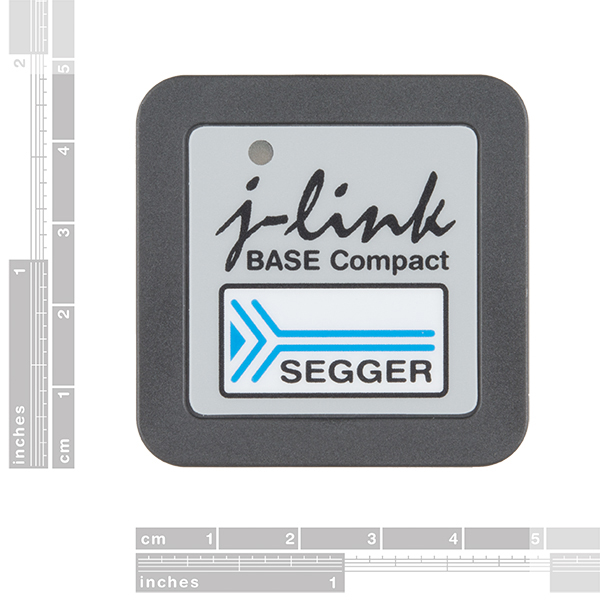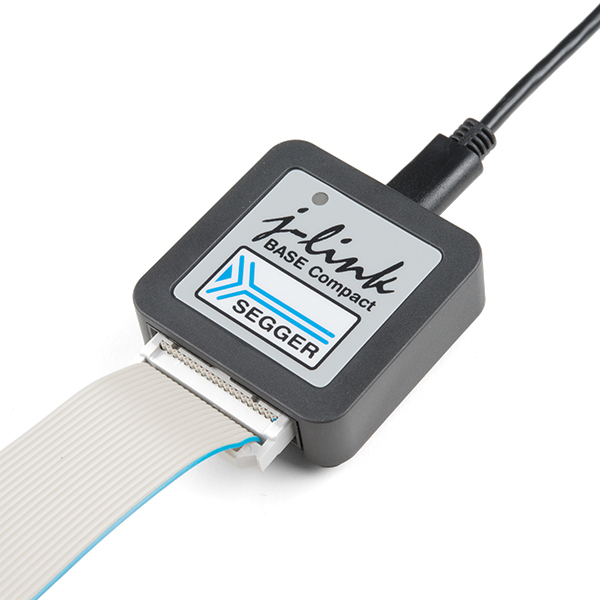J-Link BASE Compact Programmer
The J-Link line of JTAG programmers from Segger is well known for their top of the line debuggers. The J-Link BASE is a USB powered JTAG debug probe supporting a large number of CPU cores. Based on a 32-bit RISC CPU, it can communicate at high speed with the supported target CPUs. J-Link is used around the world in tens of thousand places for development and production (flash programming) purposes. The J-Link Base is a great option for those getting started with JTAG/SWD programming and debugging. Unlike the EDU Mini and the EDU this version comes with a license that allows you to build commercial products with it.
With a USB port on one end, and a 20-pin JTAG connector on the other end, just plug in the included cable and connect to your favorite ARM board, or just connect the pins you need, to get started.
- J-Link BASE Compact Programmer
- 0.1" 20-pin ribbon cable
- USB cable
- Unlimited Breakpoints
- Free Software updates
- Supports concurrent access to CPU by multiple applications
- Crossplatform support (Windows, Linux, macOS)
- Linux and Mac versions are limited to J-Link Commander, command line GDBServer, shared library (DLL equivalent)
- Size: 47mm x 40mm x 14mm
- Weight: 20g
- Target Interface Voltage: 1.2V ... 5V
- Target Supply Voltage: 5V (derived from USB voltage)
- JTAG speed: Max 15MHz
- SWO sampling frequency: Max 30MHz
- Data input rise time and fall time: <=20ns
- Data output rise time and fall time: <=10ns
- Clock rise time and fall time: <=3ns
J-Link BASE Compact Programmer Product Help and Resources
Core Skill: Programming
If a board needs code or communicates somehow, you're going to need to know how to program or interface with it. The programming skill is all about communication and code.
Skill Level: Competent - The toolchain for programming is a bit more complex and will examples may not be explicitly provided for you. You will be required to have a fundamental knowledge of programming and be required to provide your own code. You may need to modify existing libraries or code to work with your specific hardware. Sensor and hardware interfaces will be SPI or I2C.
See all skill levels
Core Skill: Electrical Prototyping
If it requires power, you need to know how much, what all the pins do, and how to hook it up. You may need to reference datasheets, schematics, and know the ins and outs of electronics.
Skill Level: Experienced - You will need to consult a datasheet for calculations to determine a components output format, linearity, and do a little math to get what you need. You will be using a datasheet or schematic beyond basic pinouts.
See all skill levels
Comments
Looking for answers to technical questions?
We welcome your comments and suggestions below. However, if you are looking for solutions to technical questions please see our Technical Assistance page.
Customer Reviews
No reviews yet.



